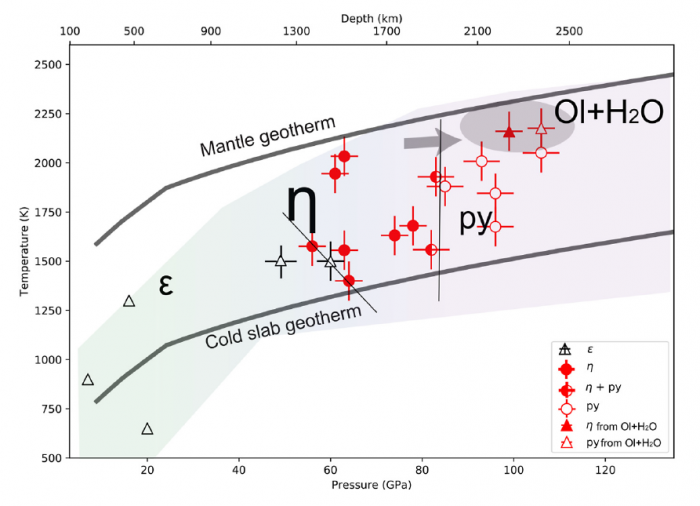“A new hydrous iron oxide phase stable at mid-mantle pressures”
- Authors
H. Chen, S.-Y. Xie, B. Ko, T. Kim, C. Nisr, V. Prakapenka, E. Greenberg, D. Zhang, W. Bi, A.E. Ercan, Y. Lee, S.-H. Shim
- Journal
Earth and Planetary Science Letters
Vol.550, pp.116551, 2020.11 - DOI
Abstract
The amount of hydrogen stored in the Earth's interior is important for a range of issues, including the volatile incorporation during the Earth formation and the co-evolution of the atmosphere, the hydrosphere, and the interior. Recent experiments found titanium bearing ε-FeOOH in a hydrous basaltic system at 12–19 GPa and 1300 K. Pyrite-type FeOOH was found to be stable at pressures higher than 80 GPa. These discoveries suggest possible hydrogen storage in the mantle transition zone and in the mantle below 1800 km depths, respectively. However, it remains uncertain how the potential deep hydrogen storage can be connected to the shallower storage. Here, we report a new hydrous iron oxide (η-Fe12O18+x/2Hx, x≈2) stable at pressures between the stability fields of the ε- and the pyrite-type FeOOH. Our experiment also shows that the new η phase can exist together with the major lower mantle minerals including bridgmanite and periclase, making it an important hydrogen-bearing phase in the Earth's deep interior. Because of its limited H2O storage capacity, which is less than 1/6 of the storage capacity of the pyrite-type phase and the ε phase, the stability of the η phase would result in H2O loss during water transport in the mid mantle and therefore limit the amount of H2O potentially stored in the Fe–O–H system of the lower mantle. The large channel in the crystal structure of the η phase could provide potential storage sites for other volatile elements in the deep mantle.












